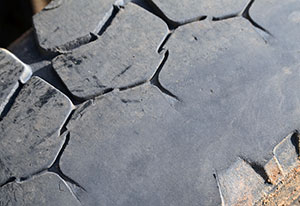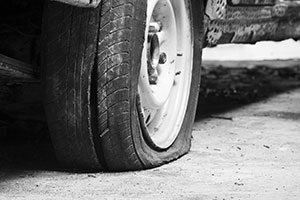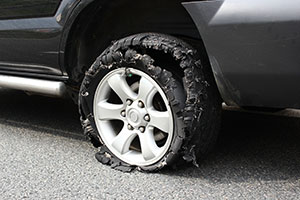01 Oct 2017
Should Australia Have a Ban on Tyres Over 10 Years Old?


To many motorists, tyres are just necessary pieces of rubber to ensure your car can actually drive on the road. However, the importance of tyres and tyre condition cannot be stressed enough.
A car’s tyres are the one and only thing that keep your car in contact with the road. They not only determine how well the car will handle and brake, but will also have an impact on the comfort of the ride and even the overall running costs.
It doesn’t matter how high-tech the vehicle is or how expensive its components are, if the tyres are not up to standard then the vehicle’s safety is immediately compromised. Here are some of statistics and a case study as to why worn tyres can put you in danger when driving.
There are many articles about tyre maintenance and routine checks, but one important consideration that is often overlooked is the actual age of a tyre. There are currently no laws regarding the maximum age of tyres, but this is important to consider as the condition of a tyre deteriorates over time. It is important to know when to replace tyres to ensure a safe a smooth ride. An understanding of the tyre lifespan helps you to make the best use of your car tyres.
Knowing the tyre expiry date will help you understand when exactly you need to replace your tyres and prevent accidents. The main reason why tyres deteriorate with age is due to the oxidation process. As rubber is exposed to oxygen, it dries out and starts to crack. Most of this occurs in the inner layers of the tyre, and this can eventually lead to the inner layers delaminating from the steel belts rather than flexing as they are designed to do.


Factors that affect tyre aging
There are four main factors that can determine the tyre life in years or how quickly a tyre will age:
- The inner liner – is designed to keep the air inside the tyre. Naturally, some air will always escape, but a higher quality tyre will have a higher quality liner, which minimises air leakage and reduces oxidation.
- Driving – when tyres are driven, the internal oils circulate throughout the tyre and lubricate the inner layers. For this reason, when tyres are used less they are actually more prone to ageing.
- Pressure – when a tyre is filled with air, the pressure will result in more oxidation than would occur if it was just being stored without air.
- Heat – the greater the temperature, the more reactive oxygen becomes, allowing it to permeate through the inner liner and react with the internal rubber.
With age obviously a critical factor, are you concerned by the thought of how old are my tyres? The easiest way to tell is to look at the last four digits of the Tyre Identification Number (TIN) on the wall of your tyres. It will be in the format WWYY, where the WW represents the week and the YY represents the year. For example, if it reads “1812”, it was manufactured in the 18th week of the year 2012. Check out our comprehensive guide on how to read the writing on your tyres to learn more.
What’s the general lifespan of a tyre?
As a general guide, most tyre manufacturers recommend replacing tyres when they pass 6 years of the date of manufacture. Some tyre experts even suggest 5 years, but in reality, there are many tyres that are being driven on which are well over this age. This is due to two main factors.
- Motorists are not educated on how to check the age of their tyres so it is not something they think to monitor. Perhaps this should be noted on the paperwork when tyres are sold and installed.
- There are no laws in place to ensure that older tyres are replaced on registered vehicles. Currently in Australia, there are specific no legal requirements for tyres to be used by a specific date. The current regulations that are being followed are specified in (Australian Design Rules) ADR 42 and ADR 23.
What About Retreaded Tyres?
The Road Transport (Vehicle Registration) Regulation 2017 requires all retreaded tyres fitted to vehicles to comply with the provisions of the applicable Australian Standard. Tyres retreaded after 29 June 1998 must comply with the provisions of Australian Standard AS 1973-1993 “Pneumatic tyres – Passenger Car, Light Truck and Truck/Bus – Retreading and Repair Process”. In accordance with this standard, the tyre must have markings specifying the identity of the retreader, the date it is retreaded, the words ‘RETREAD’ or ‘REMOULD’ as applicable, and the tyre’s speed limit.
So, should there be a ban?
For this reason, it might be time for a ban to be placed on all tyres that are over 10 years of age. This will ensure at least a minimal level of vehicle safety from a tyre age perspective. Of course, there are other factors such as kilometres travelled, air pressure and rotation intervals that contribute to overall tyre condition, but these are very much dependent on individual cases. Age, on the other hand, is not considered or checked as often as it should be.





















































































